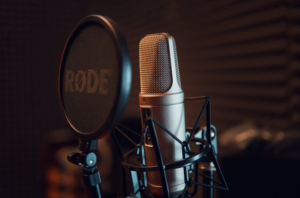The Technology Behind Sound Recording and Reproduction
Music technology has been developing rapidly since the very beginning of the music industry. One of the most influential technologies that affected the whole music industry is the rise of sound recording and reproduction. You can start your learning by checking out the story of elp emerson lake and palmer. What should we learn about the technology behind sound recording and reproduction? The answer to that question is something that every musician, artist, or audiophile should know! This post will explore the technology behind sound recording and reproduction along with two types of audio recording technology.
The Sound Recording and Reproduction Technology in a Nutshell
 Sound recording technology is capturing sounds, storing them as digital or analog signals, and then reproducing those sounds. The first sound recording was created in 1877 by Thomas Edison. His invention, the phonograph, recorded sound onto a rotating cylinder coated with wax. The user would need to rotate the cylinder manually to reproduce the sound.
Sound recording technology is capturing sounds, storing them as digital or analog signals, and then reproducing those sounds. The first sound recording was created in 1877 by Thomas Edison. His invention, the phonograph, recorded sound onto a rotating cylinder coated with wax. The user would need to rotate the cylinder manually to reproduce the sound.
In 1888, Emile Berliner invented the gramophone, which used a flat disc to record and reproduce sound. It was a more practical design because the user could play the disc at any speed they desired. The gramophone eventually replaced the phonograph as the most popular sound recording technology. Today, we use digital recordings to store sound. A digital recording stores the sound as a series of numbers that a computer can playback. Analog recordings store the sound as a physical waveform which an amplifier and speaker can reproduce.
The Two Types of Sound Recording Technologies
 There are two main types of sound recording technology: analog and digital. Analog recordings capture the sound as a physical waveform, while digital recordings store the sound as a series of numbers. Analog recordings are created by capturing the sound as it travels through the air and converting it into a physical waveform. The waveform is then stored on media, such as vinyl or magnetic tape. The waveform is converted back into an electrical signal and sent to an amplifier and speaker to reproduce the sound.
There are two main types of sound recording technology: analog and digital. Analog recordings capture the sound as a physical waveform, while digital recordings store the sound as a series of numbers. Analog recordings are created by capturing the sound as it travels through the air and converting it into a physical waveform. The waveform is then stored on media, such as vinyl or magnetic tape. The waveform is converted back into an electrical signal and sent to an amplifier and speaker to reproduce the sound.
Digital recordings store the sound as a series of numbers. The numbers are converted back into an electrical signal and played through your speakers when you listen to a digital recording. Digital recordings are immune to wear and tear, so they are often used for archival purposes. Analog recordings have a warmer, more natural sound than digital recordings. However, they are susceptible to wear and tear. They can only be played back on equipment compatible with the format. Digital recordings have a colder, less natural sound than analog recordings. Still, they are immune to wear and tear and can be played back on any audio equipment.
The Latest Innovations of Digital Audio Recording Software
Digital audio recording software has come a long way in the past few years. The latest innovations include real-time pitch correction, automatic level adjustment, and noise reduction. These features make it easier to produce high-quality recordings, even if you’re not an expert sound engineer. With …



 If you’re looking for a smartwatch that can help improve your health, there are many models on the market with unique features related to wellness. Some watches come equipped with sensors that track heart rate, blood pressure, and other vital signs. These watches can provide feedback about your overall health and even offer tips for improvement.
If you’re looking for a smartwatch that can help improve your health, there are many models on the market with unique features related to wellness. Some watches come equipped with sensors that track heart rate, blood pressure, and other vital signs. These watches can provide feedback about your overall health and even offer tips for improvement. As with alerts and notifications, the way your smartwatch displays incoming calls is an important thing to think about when you’re choosing a watch. Many watches will display call information on their screens, so it’s easy for anyone to see who is calling at any given time. However, some models come equipped with special buttons or other features related to messaging. Suppose you’re someone who frequently responds to messages on the go. In that case, it might be helpful to find a watch with dedicated messaging buttons that will allow you to quickly and easily read new messages without having to fumble through your phone.
As with alerts and notifications, the way your smartwatch displays incoming calls is an important thing to think about when you’re choosing a watch. Many watches will display call information on their screens, so it’s easy for anyone to see who is calling at any given time. However, some models come equipped with special buttons or other features related to messaging. Suppose you’re someone who frequently responds to messages on the go. In that case, it might be helpful to find a watch with dedicated messaging buttons that will allow you to quickly and easily read new messages without having to fumble through your phone.